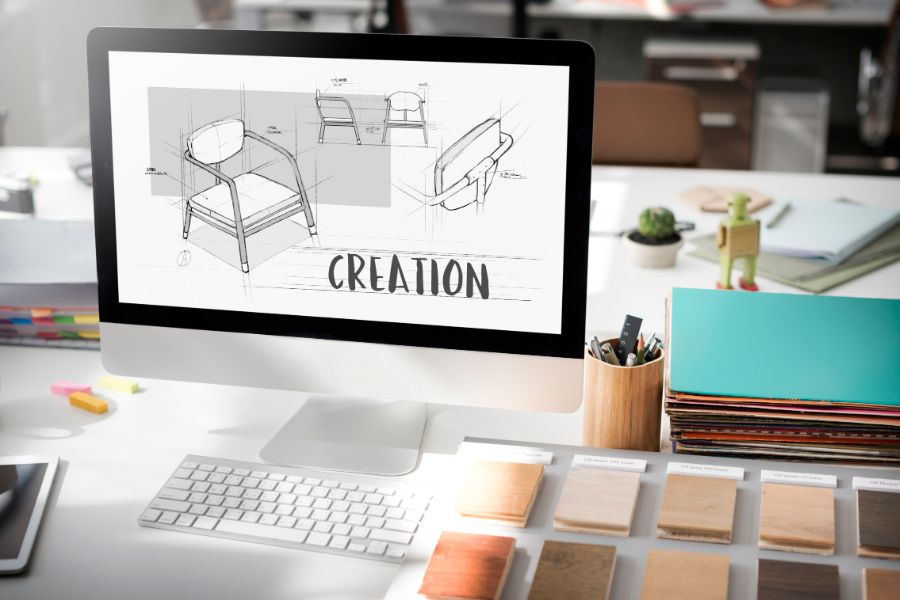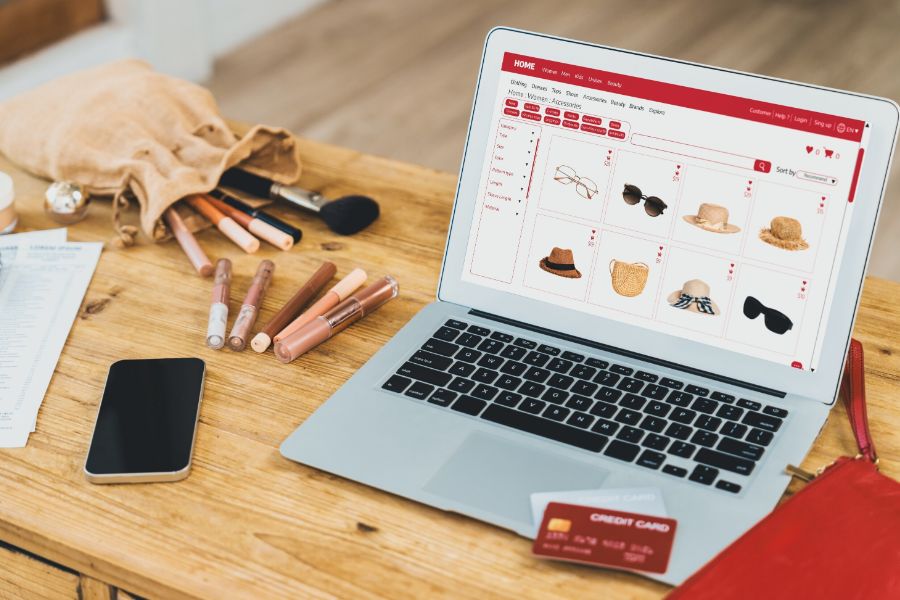In recent years, the global furniture market has witnessed a remarkable transformation. With technology as its driving force, furniture store software has emerged as a powerful tool embraced by businesses worldwide. This software revolutionizes how furniture retailers operate, offering them the means to thrive in an increasingly competitive landscape.
Join us on a journey to uncover the incredible capabilities of this software and learn how it empowers you to create and manage bespoke looks, transforming your furniture retail business into a dynamic, customer-centric enterprise.
Overview of the furniture store software
Before diving into the intricacies of creating and managing bespoke looks, it’s essential to understand the capabilities of multi-location furniture store software.
Furniture store software is a versatile digital solution designed to optimize aspects of your furniture retail operations. It acts as the backbone of your business, seamlessly integrating various processes, from inventory management to sales tracking, and providing a user-friendly interface for both your staff and customers. It includes POS (point of sale), inventory management, e-commerce, retail management, product visualizer and configurator, accounting, and other services
Benefits of the furniture store software
Furniture store software offers a wide array of benefits that can significantly enhance your business operations. Let’s delve into each of these advantages with specifics to know how this software can revolutionize your furniture retail business.
Improved inventory management
One of the primary benefits of this software is enhanced inventory management. It allows you to keep track of your furniture stock in real-time across multiple locations. Gone are the days of overstocking or running out of popular items. With accurate inventory data at your fingertips, you can optimize stock levels, reduce carrying costs, and avoid lost sales opportunities. You can use the POS system ConnectPOS – a multi-channel sales management software that helps enhance inventory management for your business.
For example, you run a multi-location furniture store, and you’ve just received a shipment of new furniture pieces. With traditional inventory management methods, tracking the arrival of each item, its location, and its availability in real time can be a logistical nightmare. However, with furniture store software, you can effortlessly manage your inventory. As soon as a new item is scanned into your system, it updates your inventory database. This means that not only can you see how many pieces of a particular item are in stock, but you can also track its location within your various store locations. This level of accuracy prevents overselling, minimizes stockouts, and ensures that your customers always find what they’re looking for.
Improved order processing
Efficient order processing is crucial for customer satisfaction. Furniture store software automates and streamlines the order fulfilment process, reducing errors and ensuring orders are shipped promptly. This leads to happier customers and higher retention rates.
For instance, when a customer visits your store and requests a customized sofa with a unique configuration, the traditional process involves manual paperwork, phone communications, and the potential for mistakes. However, the implementation of furniture store software simplifies this procedure. Your sales associate can input the customer’s specifications into the software, automatically generating an order. This order includes precise pricing and delivery information, significantly reducing the likelihood of human errors and expediting the entire process. Consequently, this enhances the customer’s experience and elevates overall operational efficiency.
Delivery management simplified
Coordinating furniture deliveries across multiple locations and handling logistics can be daunting. However, furniture store software simplifies this process significantly. It offers features like route optimization, which helps your delivery teams plan the most efficient routes to minimize travel time and fuel costs. Additionally, it provides real-time tracking capabilities, allowing your customers to know exactly when their furniture will arrive.
For instance, a customer can receive a text message notification that their dining table will be delivered within a specific two-hour window, enhancing customer satisfaction and reducing the chances of missed deliveries.
Better data analysis
Data is a goldmine for retailers. This software collects and analyzes data on customer behaviour, sales trends, and inventory turnover. With this information, you can make data-driven decisions to optimize your product offerings and marketing strategies.
Consider a situation where you want to determine which furniture styles are trending in your store. With traditional methods, this could involve manually reviewing sales data and customer feedback, a time-consuming and potentially inaccurate process. Furniture store software excels in data analysis. It can generate comprehensive reports that show which products are selling best, which styles are most popular among different demographics, and even the most profitable times to run promotions. Armed with this data, you can make informed decisions about inventory management, marketing strategies, and product development.
Improved sales tracking and financial performance
Keeping a close eye on sales and financial performance is crucial for any business. Furniture store software offers detailed sales tracking and financial reporting, helping you identify profitable products, assess the success of marketing campaigns, and ultimately boost your bottom line.
Suppose you have a specific sales goal for the quarter, and you need to monitor your progress closely. Furniture store software enables real-time sales tracking, allowing you to see how you’re performing against your targets.
For instance, you can check the software’s dashboard and instantly know that you’ve achieved 80% of your quarterly sales goal. Moreover, the software can identify top-selling products, helping you allocate resources to promote those items further. This level of insight empowers you to adapt your strategies, maximize revenue, and improve overall financial performance.
Personalized shopping experience
In the digital age, customers expect personalized experiences. Multi-location furniture store software enables you to tailor product recommendations and promotions to individual customers based on their preferences and browsing history. This personal touch can significantly increase conversion rates and customer loyalty.
Imagine a customer named Sarah who frequently shops at your furniture store. She prefers minimalist, modern furniture and often buys items in shades of grey. With furniture store POS software, you can create a customer profile for Sarah, tracking her past purchases and preferences. The software can then use this data to recommend products that align with her tastes.
For instance, the next time Sarah visits your website or store, she might receive personalized recommendations for a sleek grey sofa and matching coffee table. This tailored shopping experience not only delights Sarah but also increases the likelihood of her making another purchase.
How to create and manage bespoke looks with multi-location furniture store software?
You’ll need to follow a systematic approach to create and manage bespoke looks with multi-location furniture store software. Below, we’ll give the steps that your business can take:
Step 1: Browsing the catalog
The journey begins with customers exploring your extensive catalog of furniture and decor. Multi-location furniture store software enhances this initial step in several ways:
● User-friendly interface: The software provides an intuitive and user-friendly interface, ensuring that customers can easily navigate through your product offerings. Whether they’re searching for a specific item or seeking inspiration, the catalog’s accessibility is paramount.
● Advanced search and filters: Customers can utilize search functions and filters to narrow down their choices quickly. For example, if a customer is looking for a leather sofa in a particular color, they can apply filters to display only relevant options, saving them time and providing a more enjoyable shopping experience.
● Rich product descriptions: Each product listing is enriched with detailed descriptions, high-quality images, and specifications. This empowers customers to make informed decisions by providing insights into materials, dimensions, and available color choices. Cross-selling opportunities: The software intelligently suggests related products, enhancing the chances of upselling. For instance, when a customer views a dining table, the system may recommend matching chairs or complementary accessories, increasing the average order value.
Step 2: Room visualization
To help customers visualize how your furniture will fit into their living spaces, multi-location furniture store software offers advanced room visualization tools:
● Augmented reality (AR): Many software solutions seamlessly integrate AR technology, allowing customers to use their smartphones or tablets to place virtual furniture within their rooms. This feature lets them see precisely how a sofa or coffee table will fit and complement their specific space, providing a highly immersive shopping experience.
● 3D modeling: Some software provides 3D modeling capabilities, enabling customers to create digital representations of their rooms and furnish them with items from your catalog. This level of interactivity engages customers and helps them make more informed choices.
● Realistic renderings: High-quality and realistic renderings provide customers with a clear and accurate depiction of how a piece of furniture will appear in their home environment. These renderings take factors such as lighting, perspective, and room layout into account, delivering a highly realistic preview.
Step 3: Adjustments and customization
Every customer has unique preferences and needs. Your software should enable customers to customize furniture items to their liking. This could involve selecting different colors, materials, sizes, or configurations. The ability to visualize these customizations in real time is a game-changer.
● Customization options: Customers have the freedom to modify various aspects of a product, such as choosing upholstery fabrics and finishes, or adjusting dimensions. For instance, they can transform a standard sofa into a sectional with their preferred fabric and color.
● Instant price calculation: As customers make customizations, the software calculates the final price in real time. This transparency ensures customers are fully aware of the cost implications of their choices, promoting informed decision-making.
● Visual feedback: Changes made to the furniture are visually represented in real-time, allowing customers to see the immediate impact of their customizations. This instant feedback enhances the interactive shopping experience and empowers customers to fine-tune their selections.
Step 4: Saving and sharing
Customers should have the option to save their bespoke designs for future reference or share them with friends and family for input. Social sharing features can also help your business gain more visibility such as:
● User profiles: Customers can create profiles within the software, where their saved designs are securely stored for future reference. This feature encourages return visits and repeat business, as customers can easily revisit and refine their bespoke looks.
● Social sharing: The software often incorporates social sharing buttons, enabling customers to effortlessly share their customized designs with friends and family on popular platforms like Facebook, Instagram, or Pinterest. This not only engages customers but also generates organic marketing through word-of-mouth.
● Collaborative design: In some cases, multiple users can collaborate on the same design. For instance, a couple can work together to create their dream living room layout, enhancing the shopping experience and decision-making process for couples and families
Step 5: Inventory management
Behind the scenes, your multi-location furniture store software is hard at work. It’s continuously updating inventory levels based on customer selections, ensuring that selected items are available for purchase.
● Real-time inventory updates: When a customer customizes a product, the software instantly checks the availability of materials and components, ensuring that the order can be fulfilled promptly without the risk of overselling.
● Inventory alerts: The software can send alerts to your team when certain items are running low in stock, enabling proactive restocking and preventing potential shortages.
● Location-based inventory: For multi-location stores, the software can track inventory at each location separately. This capability allows for efficient stock transfers and ensures that customers can purchase items from the nearest store, reducing delivery times and costs.
Step 6: Placing orders
Once customers are satisfied with their bespoke designs, they can proceed to place orders seamlessly. The software should offer a secure and straightforward checkout process, allowing for various payment options and shipping preferences.
● Automated order generation: The software streamlines the entire order processing workflow. From creating the order with all customizations to processing payments securely, this automation minimizes the risk of errors and ensures a smooth transaction process.
● Order history: Customers can access their order history within their profiles. This feature makes it easy to track the status of their orders, review past purchases, and facilitate reorders, fostering customer loyalty and convenience.
● Delivery options: Customers can select their preferred delivery date and method, providing flexibility and convenience in receiving their bespoke furniture.
Step 7: Reporting and analytics
After orders have been processed, it’s essential to leverage the software’s reporting and analytics features to evaluate the success of your bespoke design service. This data-driven approach allows you to make informed decisions and continuously enhance your services.
- Monitor customization popularity: Analyze the data to identify which customizations are the most popular among your customers. Understanding these preferences can help you tailor your product offerings to align with customer demand. For instance, if certain colours or materials are consistently favoured, consider expanding your inventory in those areas.
- Track customer ehavior: Use analytics to track customer behavior patterns. Determine how customers navigate your platform, which products they spend the most time customizing, and what drives their purchasing decisions. This information can guide improvements in user experience and product recommendations.
- Evaluate sales performance: Analyze sales data to assess the performance of your bespoke design service. Identify trends in sales volumes, conversion rates, and revenue generated from customized orders. This information can help you allocate resources effectively and optimize your marketing strategies.
- Gather customer feedback: Collect and analyze customer feedback related to the customization process. Understand their satisfaction levels, pain points, and suggestions for improvement. This input is invaluable for refining your software and enhancing the overall customer experience.
Conclusion
Multi-location furniture store software serves as a dynamic tool that empowers retailers to provide a superior shopping experience while streamlining operations. From browsing the catalogue to placing orders and conducting in-depth analytics, this software is the key to creating and managing bespoke looks that cater to each customer’s unique style and preferences.
If you are intrigued or have any questions regarding the multi-location furniture store system, you can reach out to us – ConnectPOS. We are here to provide you with further information, answer your inquiries, and guide you on how to harness the power of this transformative software for your furniture retail business.
ConnectPOS is a all-in-one point of sale solution tailored to meet your eCommerce POS needs, streamline business operations, boost sales, and enhance customer experience in diverse industries. We offer custom POS with features, pricing, and plans to suit your unique business requirements.




